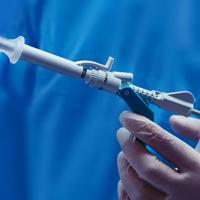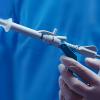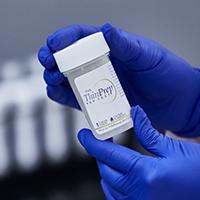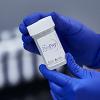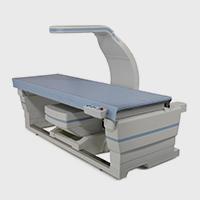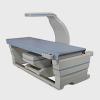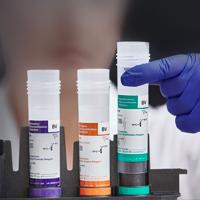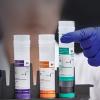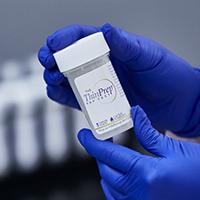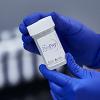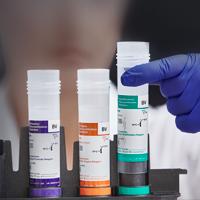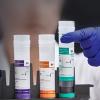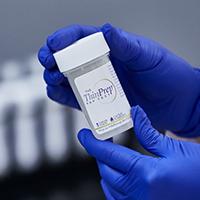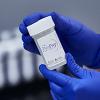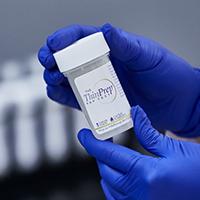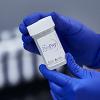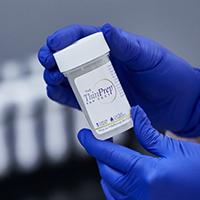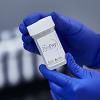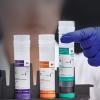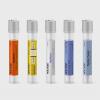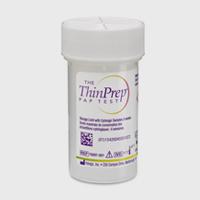Navigating Respiratory Demands with Molecular Precision

Following the COVID-19 pandemic, respiratory viruses like influenza, RSV, and rhinoviruses have re-emerged in unpredictable, off-season waves, disrupting traditional patterns and increasing diagnostic uncertainty.¹ This shift demands greater agility, scalability, and precision from today’s laboratories.
Join the webinar:
Molecular Testing for Respiratory Pathogens
Overlapping Symptoms & New Threats
Respiratory viruses often share non-specific symptoms (cough, fever, shortness of breath, etc.) making syndromic presentation alone an unreliable indicator. As a result, diagnostic accuracy hinges on laboratory testing. However, the number of circulating respiratory pathogens has surged, and so has the complexity of interpretation. A single sample may contain multiple viruses; co-infections are more common than previously understood, occurring in up to 20% of pediatric and immunocompromised cases.2
This has triggered a greater reliance on multiplex respiratory panels, molecular assays capable of detecting several pathogens from a single sample. Uncertainty remains about the utility of syndromic assays on healthy patients. Most results on a full respiratory viral panel are unlikely to affect management in this population, so targeted testing may be preferable.3
Automation & Random-access Testing are Vital
The ability to respond rapidly to unpredictable surges is no longer optional, it’s essential. Hologic’s Panther Fusion® respiratory assays enable labs to pivot quickly thanks to open- and random-access design.
During the pandemic, laboratories using the Panther Fusion system were able to rapidly implement SARS-CoV-2 testing by developing laboratory tests through the system’s open access channel, designed for running lab-developed tests (LDTs).4 Peer-reviewed publications have demonstrated the strong performance of the Panther Fusion respiratory assay portfolio across a broad range of viral targets, highlighting its minimal hands-on time and walkaway automation that supports high-throughput testing.5
One Sample, Many Answers
Multiplex PCR platforms now serve as a diagnostic cornerstone. They reduce the need for repeated sampling, lower overall turnaround times, and improve detection of mixed infections, all while easing the workload on clinical staff.
Panther Fusion assays have demonstrated high sensitivity and specificity across a respiratory panel of 10 pathogens, including both seasonal viruses and emerging threats, with publications confirming accurate detection and no observed cross-reactivity.5
With influenza, RSV, and SARS-CoV-2 now co-circulating as a ‘triple threat’ during respiratory season, reliable multiplex testing has become essential. Surveillance data from France during the 2023–2024 season revealed simultaneous surges in all three viruses, underscoring the urgent need for integrated, high-performance diagnostics.6
Automation is the Only Scalable Solution
Workforce shortages are straining laboratories worldwide. A recent American Society for Clinical Pathology (ASCP) survey notes vacancy rates of up to 25% depending on the areas, intensifying the need for systems that reduce manual workload and scale efficiently.7 Automated platforms like Panther address this head-on, offering reliable throughput even during surges, without requiring additional personnel or overtime.
Diagnostics as Pandemic Preparedness
Pathogen diversity is expanding, and with it, the zoonotic risk. A 2022 analysis in Communications Biology found that dozens of novel viruses carry potential for human transmission.8
As the global community focuses on pandemic preparedness, diagnostic platforms must offer both breadth and adaptability. Molecular systems, especially those with open-access architecture, are best positioned to keep pace with this expanding landscape.
See Beyond to Move Ahead: From Reactive to Ready
The next era of respiratory diagnostics demands more than just speed. It requires foresight, flexibility, and integration. With scalable, automated solutions like Panther Fusion, laboratories can shift from reactive testing to a proactive role in public health resilience.
The goal is no longer just identifying infections, but enabling healthcare systems to respond with clarity, speed, and certainty.
To learn more, visit our Respiratory Testing Solution page.
For more insight articles, visit the Hologic Innovation Exchange.
2797
Hologic BV, Da Vincilaan 5, 1930 Zaventem, Belgium.
Adlhoch, C., Pastore R. L., et al. (2024). Characterising the asynchronous resurgence of common respiratory viruses following the COVID-19 pandemic. Nature Communications, 15, 2226. https://doi.org/10.1038/s41467-025-56776-z
Babawale, P.I.; Guerrero-Plata, A. Respiratory Viral Coinfections: Insights into Epidemiology, Immune Response, Pathology, and Clinical Outcomes. Pathogens 2024, 13, 316. https://doi.org/10.3390/pathogens13040316 https://www.mdpi.com/2076-0817/13/4/316
American Society for Microbiology. (2020). Making Sense of Respiratory Viral Panel Results. https://asm.org/articles/2020/march/making-sense-of-respiratory-viral-panel-results
Cordes AK, Heim A. (2020). Rapid random access detection of the novel SARS-CoV-2 using an open access protocol for the Panther Fusion. J Clin Virol. 125:104305. Https://doi.org/10.1016/j.jcv.2020.104305
Voermans, J.J.C., et al. (2020). Performance evaluation of the Panther Fusion® respiratory tract panel. J Clin Virol., 123, 104232. https://doi.org/10.1016/j.jcv.2019.104232
Chauvel C., et al. (2025). Community and hospital-based laboratory surveillance for influenza, RSV, and SARS-CoV-2 during the 2023–2024 season, Lyon, France. Authorea. https://doi.org/10.22541/au.174151638.88456325/v1
https://myadlm.org/advocacy-and-outreach/adlm-policy-reports/2023/adlm-whitepaper-on-overcoming-lab-staffing-shortages. Accessed in July 2025
Pandit, P.S., Anthony, S.J., Goldstein, T. et al. Predicting the potential for zoonotic transmission and host associations for novel viruses. Commun Biol 5, 844 (2022). https://doi.org/10.1038/s42003-022-03797-9



